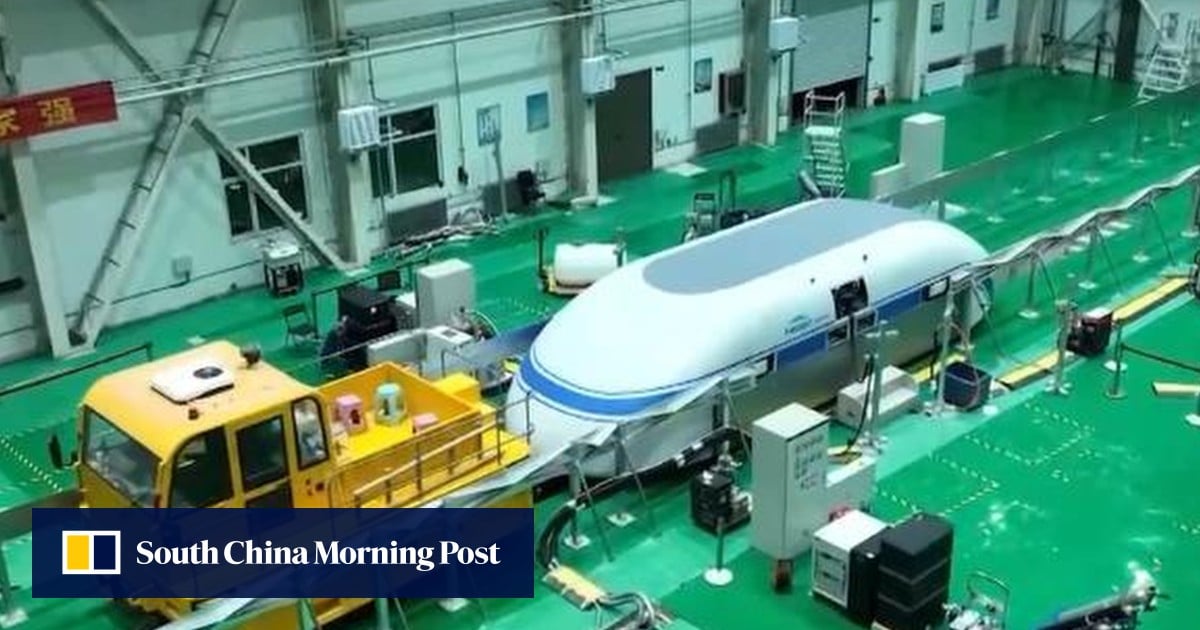I hate how some people/reporters conflate maglev (with a technology that can work) with hyperloop/vacuum trains (which is a technology that doesn’t).
Same. Don’t sully the beautiful and working maglev trains with that garbage scam that killed any HSR hopes for millions of Californians.
As I recall, they do plan to run these in reduced air pressure tunnels. It’s not so much that the tech doesn’t work, it’s just a lot harder to implement and maintain.
The advantage of lowering air pressure is less wind resistance which is a factor. However if the tubes are longer the more likely they are to break and not able to be hold pressure. Also between stops, if the tunnel needs to be re pressurized which could logistically lose any advantage of time savings of pressurized tubes.
Maybe it can work if they build it very deep and it an express train that only goes between capital cities of each province or something like that.
You don’t have to re-pressurize the whole tunnel, just make a seal around the train doors.
I guess that means that you’ll have to have really precise parking and stopping, have pressure gates to connect to all of the entrances to the train and make sure to maintain each gate with more points of failure and depressurization. The logistics of parking properly (AI assistance would be nice). It could be faster to connect logistically, but definately more points of failure. Then again even if the pressure fails, the concequence is only wasted money. its still a functional mag lift train.
If I lived in a country where the government focused on the future like China does, I’d rather invest in biomedical research, sustainable agriculture, and researching the means to industrialize without harming the environment.
CASIC says the flatness of its test track is within an 0.3 mm (0.01 inch) tolerance, that the 6 m (20 ft) diameter vacuum tubes have a geometric size error less than 2 mm (0.1 in)
The tolerances for the tube itself in most parts is not the issue. The tolerances at the points most likely to leak are the real issue. I guess we’ll see.
Or an air lock system where the train pulls into it first then is re/de-pressurized depending on if it’s going into a station or leaving.
I imagine it will have an air lock system. You wouldn’t pressurize/depressurize the whole track. Just small sections at the beginning and end of the ride. You would board, and then the train pulls forward to a section of track that seals off from both the station and the rest of the track. That section is vacuumed then doors to the vacuum sealed rail open. Train moves out.
Then when nearing the next station the reverse is done. Train pulls into a section that is then sealed and pressurized. Then pulls forward into the station where people get off/board.
Assuming they would vacuum and pressurize the whole rail is silly. That’s like if they decided to depressurize the whole space station every time someone had to do a space walk. That’s not how that happens. The train would take up most of the space in the air lock section so there wouldn’t be nearly as much air to remove. It would probably take less time that you would spend boarding a commercial flight.
Yeah, it seems that it would only make sense for very long trips. I imagine you could just use pumps to ensure that there is low pressure even if there is some leakage in the tunnel. Making it underground tunnel would likely help with that as well. It might be more practical for shipping goods than people as well. You could just have this running say between a factory and a port, load up a bunch of goods, drop them off, and go back to pick up more. You could repressurize after the tug leaves too.
They are straight up pursuing a vacuum train
They announced it seven years ago with the eventual goal reaching 4,000 kilometres per hour by 2035 from memory
Okay, so this breakthrough was just Maglev. But they do plan on using a Hyperloop eventually?
Correct me if I’m wrong, but didn’t Musk releases the Hyperloop thing to try to prevent California from getting high-speed rail? The whole thing is he wanted trains to die so that cars would remain popular so that he could push for self-driving cars for high-speed highway travel that would normally be boring to drive. He always knew that the Hyperloop was basically impossible.
And hasn’t hyperloop been basically discredited as a realistic form of long distance travel? Outside of a kilometer or two of distance, keeping even a moderately low pressure environment is Too difficult, cost ineffective, and a maintenance nightmare.
Sorry for so many follow up questions. I am perpetually away from a high quality research machine, so I can only yell at clouds right now. But this just seems strange to me.
Yeah, it’s been confirmed that the whole hyperloop was a scam to prevent California from getting high-speed rail https://twitter.com/parismarx/status/1571628269555826688
However, situation in China is very different because there’s already a ton of high-speed rail there. I think the goal with this sort of transport system would be to remove the need for domestic flights as opposed to compete with rail.
In terms of feasibility, it’s not trivial, but I doubt it’s impossible. It likely more of a fact that it’s just not cost effective for private companies to build such infrastructure, but that’s true for a lot of large scale projects China undertakes. Hence why we never see such projects happening in the west. Any new technology is challenging, but there are also benefits to pushing the envelope.
Another fun future possibility is that this kind of stuff could be put to use on the moon. China is already planning a base by 2030. And if the plan is for long term habitation we may see many bases at some point in the future, and then those could be connected by this type of maglev systems. You don’t have to worry about atmosphere, there are no earthquakes, and no flooding to worry about. Just dig a tunnel and you’re good to go.
A base on the moon by 2030 is pretty amazing of an ambition already, so I’m looking forward to how that develops. Any sort of Maglev tunneling system would be pretty amazing to witness, even in video.
Back to on Earth. Yeah, that makes sense. Replacing flying is a really big deal. I’m just really worried about the engineering implications of this. If it’s not actually feasible, then they’re gonna waste a lot of time trying to make it happen. Then again, they do have trains pretty much figured out and they can walk and chew gum at the same time as opposed to any Western government which can’t even get the basics right. So at least they have the expertise to at least attempt it.
I guess I just had it in my head that it was basically a big scam and was so infeasible it wasn’t really worth trying. Then again, their public infrastructure is all state-owned, right? So it’s not like there’s some capitalist who’s making bank on selling this idea with no possibility of a product.
Then again, it would be funny if China succeeded in this, where everybody else has failed. Hey, they’ve got the smartest engineers, so I guess I’ll sit back and watch the development.
I wouldn’t say it’s a waste even if we find out that it’s impractical to do. Every large scale ambitious project like this results in a ton of technological and scientific advancement. Trying new things is how we learn at the end of the day. And completely agree that it would be hilarious if China actually manages to pull this off after US has been talking about it for decades with nothing to show.
China? Wait till we find out what Hamas was building in their tunnels.
ha
This is from their 2 kilometre Phase 1 track which reportedly exceeded 623 km/h (387 mph)
The Phase 2 track is supposed to be 60 kilometres long
Given the target speed is ~277 metres per second, starting with a 2,000 m test track is a pretty conservative approach
this breakthrough was just Maglev
A hyperloop is just maglev in a vacuum. That’s the hard part
The tubes have a geometric size error of less than 2 millimetres (0.1 inch) and must be capable of maintaining a vacuum state for extended periods, presenting significant challenges in fabrication and installation
didn’t Musk releases the Hyperloop thing to try to prevent California from getting high-speed rail?
Yes, like he promised that Teslas could have their batteries changed instead of recharging to get more money from the government.
hasn’t hyperloop been basically discredited as a realistic form of long distance travel
There hasn’t really been any genuine effort until now. CASIC is the real deal and state owned
CASIC is the biggest missile weapon system developing and manufacturing enterprise in China. It is known for developing, researching and manufacturing air defense missile systems, cruise missile systems, solid-propellant rockets, space technological products and other technologies with products covering various fields of land, sea, air, and electromagnetic spectrum. CASIC has provided dozens of advanced missile equipment systems for various nations, and contributed to Chinese crewed space flight, lunar exploration and other Chinese national projects.






